Years of negotiations culminated early yesterday with countries agreeing the text of a landmark accord on how to tackle pandemics, aimed at avoiding mistakes made during the COVID-19 pandemic.
After more than three years of talks and one last session, delegates at the WHO’s headquarters sealed the deal at about 2am.
“Tonight marks a significant milestone in our shared journey towards a safer world,” WHO Director-General Tedros Adhanom Ghebreyesus said.
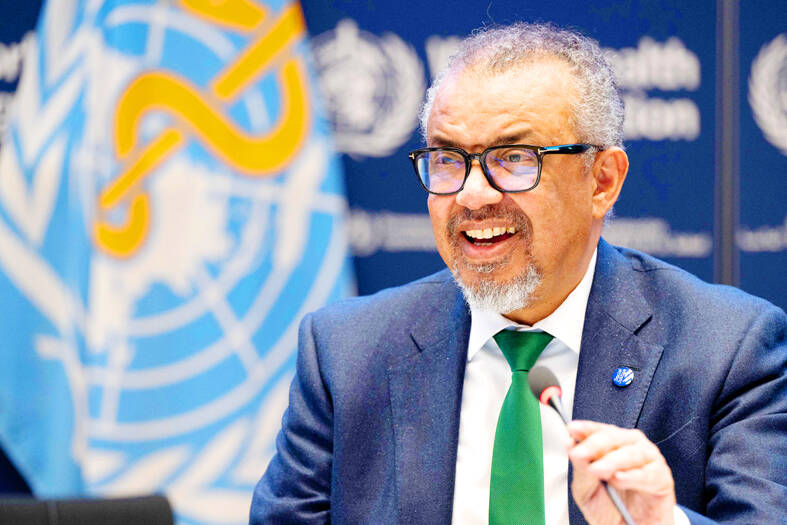
Photo: AFP
Five years after the emergence of COVID-19, which killed millions of people, devastated economies and upturned health systems, urgency hung over the talks.
Right until the last minute, disagreement lingered over a few thorny issues.
Negotiators stumbled over the agreement’s Article 11, which deals with transferring technology for pandemic health products to developing nations.
During the COVID-19 pandemic, poorer states accused rich nations of hoarding vaccines and tests.
Countries with large pharmaceutical industries have strenuously opposed the idea of mandatory tech transfers, insisting they must be voluntary.
However, it appeared that the obstacle could be overcome by adding that any transfer needed to be “mutually agreed.”
The core of the agreement is a proposed Pathogen Access and Benefit-Sharing System, aimed at allowing the swift sharing of pathogen data with pharmaceutical companies, enabling them to quickly start working on pandemic-fighting products.
In the end, the 32-page agreement was entirely highlighted in green, indicating that all of it had been fully approved by WHO member states.
“It’s adopted,” negotiations cochair Anne-Claire Amprou said. “In drafting this historic agreement, the countries of the world have demonstrated their shared commitment to preventing and protecting everyone, everywhere, from future pandemic threats.”
Congratulations poured in.
“Excellent news from Geneva,” EU President Ursula von der Leyen wrote on X. “We have learnt the lessons of COVID. To beat a pandemic, you need tests, treatments and vaccines. And you equally need solidarity and global cooperation.”
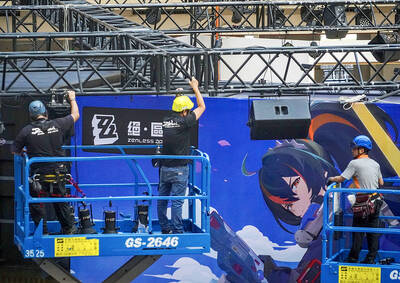
Taiwan is projected to lose a working-age population of about 6.67 million people in two waves of retirement in the coming years, as the nation confronts accelerating demographic decline and a shortage of younger workers to take their place, the Ministry of the Interior said. Taiwan experienced its largest baby boom between 1958 and 1966, when the population grew by 3.78 million, followed by a second surge of 2.89 million between 1976 and 1982, ministry data showed. In 2023, the first of those baby boom generations — those born in the late 1950s and early 1960s — began to enter retirement, triggering
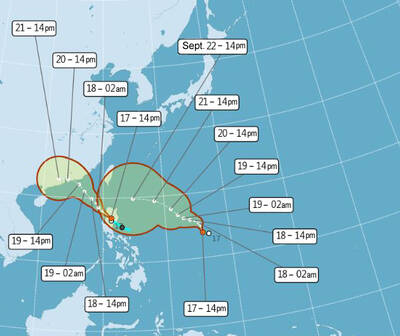
One of two tropical depressions that formed off Taiwan yesterday morning could turn into a moderate typhoon by the weekend, the Central Weather Administration (CWA) said yesterday. Tropical Depression No. 21 formed at 8am about 1,850km off the southeast coast, CWA forecaster Lee Meng-hsuan (李孟軒) said. The weather system is expected to move northwest as it builds momentum, possibly intensifying this weekend into a typhoon, which would be called Mitag, Lee said. The radius of the storm is expected to reach almost 200km, she said. It is forecast to approach the southeast of Taiwan on Monday next week and pass through the Bashi Channel
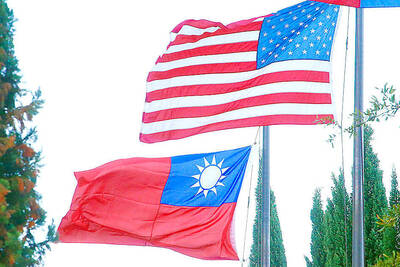
NO CHANGE: The TRA makes clear that the US does not consider the status of Taiwan to have been determined by WWII-era documents, a former AIT deputy director said The American Institute in Taiwan’s (AIT) comments that World War-II era documents do not determine Taiwan’s political status accurately conveyed the US’ stance, the US Department of State said. An AIT spokesperson on Saturday said that a Chinese official mischaracterized World War II-era documents as stating that Taiwan was ceded to the China. The remarks from the US’ de facto embassy in Taiwan drew criticism from the Ma Ying-jeou Foundation, whose director said the comments put Taiwan in danger. The Chinese-language United Daily News yesterday reported that a US State Department spokesperson confirmed the AIT’s position. They added that the US would continue to
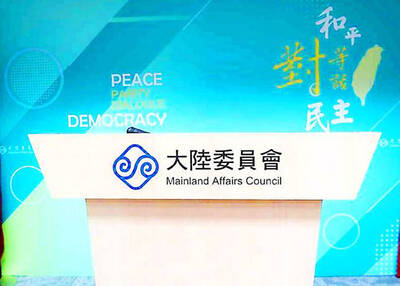
The number of Chinese spouses applying for dependent residency as well as long-term residency in Taiwan has decreased, the Mainland Affairs Council said yesterday, adding that the reduction of Chinese spouses staying or living in Taiwan is only one facet reflecting the general decrease in the number of people willing to get married in Taiwan. The number of Chinese spouses applying for dependent residency last year was 7,123, down by 2,931, or 29.15 percent, from the previous year. The same census showed that the number of Chinese spouses applying for long-term residency and receiving approval last year stood at 2,973, down 1,520,